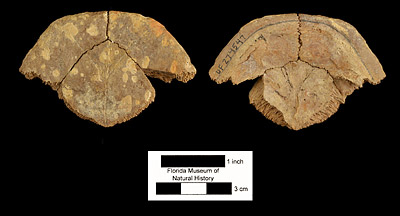Pseudemys williamsi
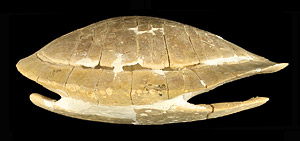
Quick Facts
Common Name: Williams’ cooter
Pseudemys williamsi is a member of the family Emydidae, which includes the pond and box turtles.
This species has been only been positively identified from two Florida localities.
Pseudemys williamsi has a smooth shell and shares several characteristics with the modern river cooter, Pseudemys concinna.
Age Range
- Late Miocene Epoch; early Hemphillian land mammal age
- About 9 to 7 million years ago
Scientific Name and Classification
Pseudemys williamsi Rose and Weaver, 1966
Source of Species Name: This species was named to honor Ernest E. Williams, a professor at Harvard University who studied recent and fossil turtles.
Classification: Reptilia, Testudines, Cryptodira, Testudinoidea, Emydidae, Deirochelyinae
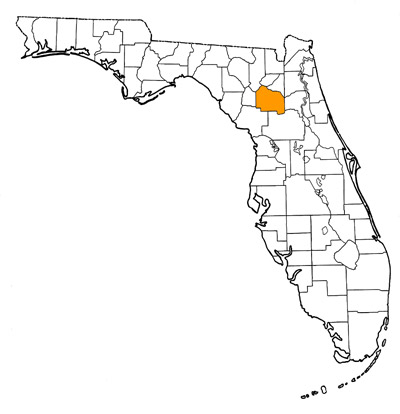
Alternate Scientific Name: Chrysemys williamsi
Overall Geographic Range
This species has been only been positively identified from the two Florida localities listed.’
Florida Fossil Occurrences
Florida fossil sites with Pseudemys williamsi:
- Alachua County—Haile 19A; McGehee Farm
Discussion
Pseudemys williamsi is a smooth-shelled fossil cooter known from the late Miocene of Florida. It was first described by Rose and Weaver (1966) from a nearly complete shell found at the McGehee Farm site in western Alachua County, with many other partial shells and nuchals. Bourque (2013) noted the presence of Pseudemys williamsi from one other Florida locality, Haile 19A. Webb et al. (1981) briefly mentioned the presence of Pseudemys williamsi from the Love Site, but did not include it in their faunal list (and no definite specimens are present in the Florida Museum of Natural History collection). Becker (1985) reported either Pseudemys williamsi or the similar species Pseudemys concinna in his faunal list of the Withlacoochee River 4A site. The preservation of the few shell elements of Pseudemys at this site suggests they are not Miocene but instead represent contamination of a Pleistocene or Holocene P. concinna or a similar smooth-shelled emydid turtle. The turtle fauna from Mixson’s Bone Bed in the American Museum of Natural History collection has not been completely studied. Its fauna is very similar to that of McGehee Farm, so Pseudemys williamsi might be present here.
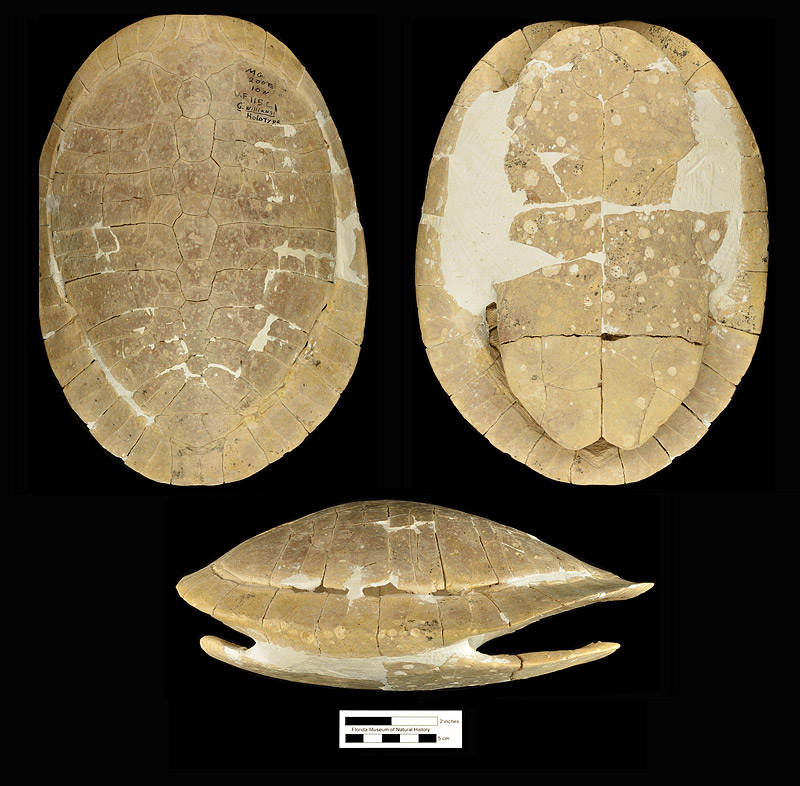
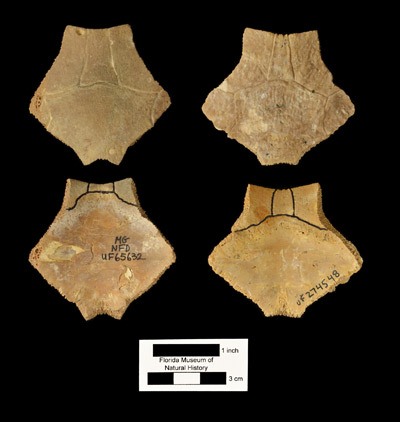
Pseudemys williamsi is a member of the family Emydidae, which includes the pond and box turtles. Pseudemys williamsi can be distinguished from other similar taxa based on three characteristics. Pseudemys williamsi is smooth-shelled (Fig. 2) unlike the rugose shell of other taxa such as Pseudemys caeleta, and species of Trachemys and Deirochelys. Additionally, Pseudemys williamsi has a short nuchal scute (also commonly referred to as the cervical scute) underlap (Fig. 3) and short gular scute overlap on the epiplastron (Fig. 4). Pseudemys williamsi shares these characteristics with the modern river cooter, Pseudemys concinna. However, the nuchal of Pseudemys concinna is notched and more trapezoidal in shape and the posterior peripherals are slightly notched. The short nuchal underlap and gular overlap can also be used to distinguish Pseudemys williamsi from other emydids such as Pseudemys caeleta and species in the Trachemys scripta complex (Rose and Weaver, 1966). Pseudemys williamsi usually co-occurs with other emydid taxa at the localities where it is found, such as Pseudemys caeleta.
If the diet and habitat of Pseudemys williamsi resembled that of the living Pseudemys concinna, then it lived primarily in rivers and had a mixed diet of water vegetation and small aquatic animals.
Sources
- Original Author(s): Sean M. Moran
- Original Completion Date: December 11, 2012
- Editor(s) Name(s): Richard C. Hulbert Jr.
- Last Updated On: March 3, 2015
This material is based upon work supported by the National Science Foundation under Grant Number CSBR 1203222, Jonathan Bloch, Principal Investigator. Any opinions, findings, and conclusions or recommendations expressed in this material are those of the author(s) and do not necessarily reflect the views of the National Science Foundation.
Copyright © Florida Museum of Natural History, University of Florida
